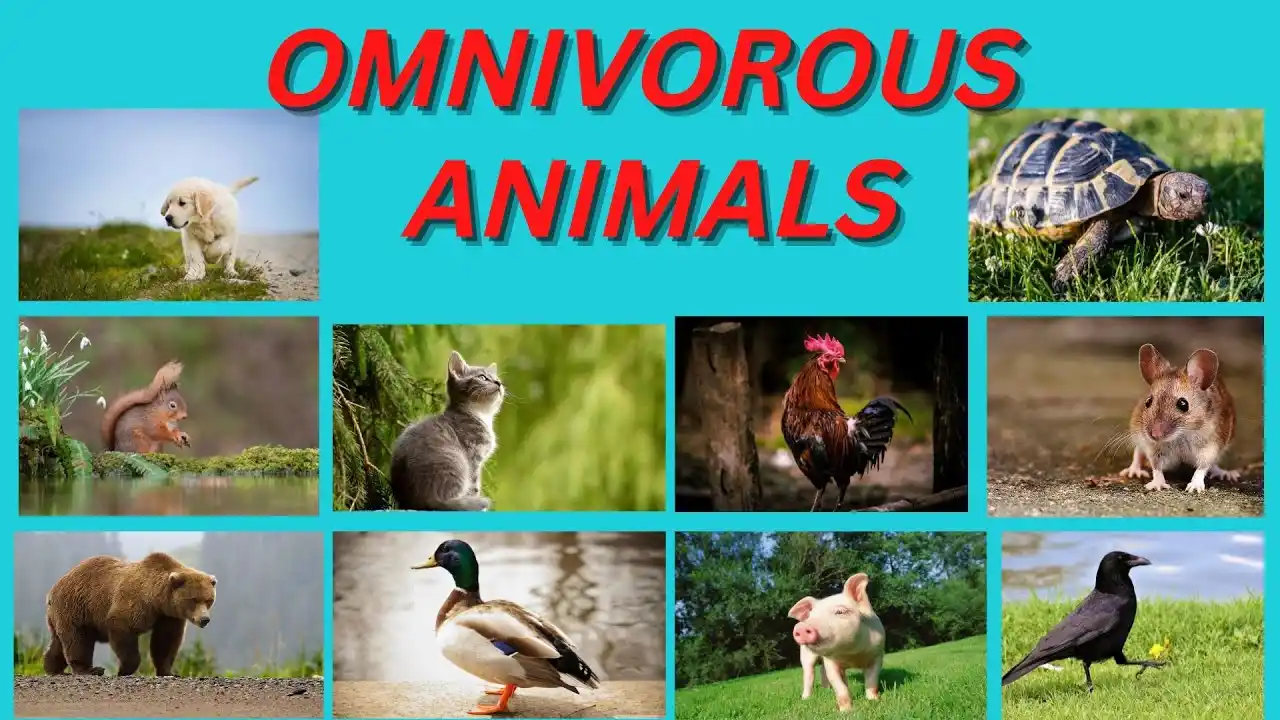Omnivorous Animals: Definition, Examples, and Ecosystem Role
What Are Omnivorous Animals? Key Characteristics
Omnivorous animals are species that consume both plant and animal matter. Their flexible diet allows them to thrive in diverse environments and adapt to varying food availability. Examples of omnivorous animals include bears, pigs, raccoons, crows, and humans.
One of their key characteristics is a versatile digestive system that can efficiently break down and absorb nutrients from a wide range of foods. This adaptability ensures a stable food supply across different conditions. Omnivores are also opportunistic feeders, switching between plant and animal sources based on what is available, helping them survive in times of scarcity.
Classification of Animals: Herbivores, Carnivores, and Omnivores
Animals are generally classified into three dietary categories:
- Herbivores: Animals that primarily consume plant-based foods (grass, leaves, fruits). Their digestive systems are specialized for breaking down tough plant material. Examples include cows, deer, rabbits, and horses.
- Carnivores: Animals that primarily consume other animals. They have sharp teeth and claws to hunt and digest meat efficiently. Examples include lions, tigers, wolves, and sharks.
- Omnivores: Animals that consume both plants and animals. Their teeth and digestive systems are adapted to handle both types of food sources. Humans, along with bears and pigs, are classic examples.
Examples of Omnivorous Animals
Here are some well-known omnivorous animals:
- Bears: Depending on the species, they eat plants, berries, fish, and small mammals.
- Pigs: Known for consuming roots, insects, and small animals along with plant matter.
- Raccoons: Opportunistic feeders, consuming fruits, nuts, small animals, and even human food waste.
- Humans: Naturally omnivorous, with a diet that often includes fruits, vegetables, grains, meats, and dairy.
Adaptations of Omnivorous Animals for Diverse Diets
Omnivores possess several adaptations that allow them to consume a wide variety of foods:
- Teeth Structure: A combination of sharp teeth for tearing meat and flat molars for grinding plants.
- Digestive System: A relatively simple stomach with flexible enzymes capable of digesting both plant fibers and animal proteins.
- Behavioral Adaptations: Advanced senses of smell and taste to identify edible food sources and foraging strategies to locate diverse foods.
These adaptations provide omnivores with a competitive advantage, allowing them to survive and thrive in varied environments, from forests to urban settings.
Impact of Omnivorous Animals on Ecosystems & Food Chains
Omnivorous animals play a vital role in maintaining ecosystem balance. By consuming both plants and animals, they help regulate population levels and prevent overpopulation of certain species.
Additionally, omnivores can occupy multiple trophic levels within the food chain. They serve both as consumers and prey, influencing the flow of energy and nutrients throughout ecosystems. Their presence fosters biodiversity and enhances ecosystem resilience.
Animals and Their Homes
Animals and their homes are fascinating examples of nature’s ingenuity. Each species has adapted to create a shelter that meets its needs. For instance, beavers build intricate lodges from branches and mud, while birds construct nests with materials like twigs and feathers. These homes offer protection from predators and harsh weather, ensuring the survival of the animals.
- Beavers: Construct intricate lodges using branches and mud, creating a haven in rivers or streams.
- Birds: Build nests with twigs, feathers, and other materials, often in trees or on cliffs, to protect their eggs and young.
- Termites: Create complex mounds from soil and saliva, which regulate temperature and humidity inside their colonies.
- Ants: Dig elaborate underground nests with multiple chambers and tunnels for living and storing food.
- Spiders: Spin webs using silk to trap prey and create a secure space for laying eggs and hiding.
Birds Name: Fascinating Species to Know
Exploring various birds’ names can be both educational and enjoyable. For instance, North Americans regard the Bald Eagle as a symbol of strength and freedom, while they celebrate the Hummingbird for its agility and rapid wing beats. The Puffin, with its colorful beak and charming appearance, is a favorite among bird watchers. Each bird’s name often reflects unique characteristics or behaviors, making it easier to identify and appreciate them. Learning about different birds’ names enriches our understanding of avian diversity and enhances our connection to the natural world.






[…] Omnivorous animals are species that consume both plant and animal matter as part of their diet. Unlike herbivores or carnivores, omnivores have the flexibility to eat a wide variety of foods, allowing them to adapt to different environments. Some common examples of omnivorous animals include bears, raccoons, pigs, and humans. Their ability to digest both plants and meat provides a nutritional advantage, making them highly adaptable in terms of food sources. By consuming diverse food types, omnivorous animals play a significant role in maintaining balance within ecosystems. […]